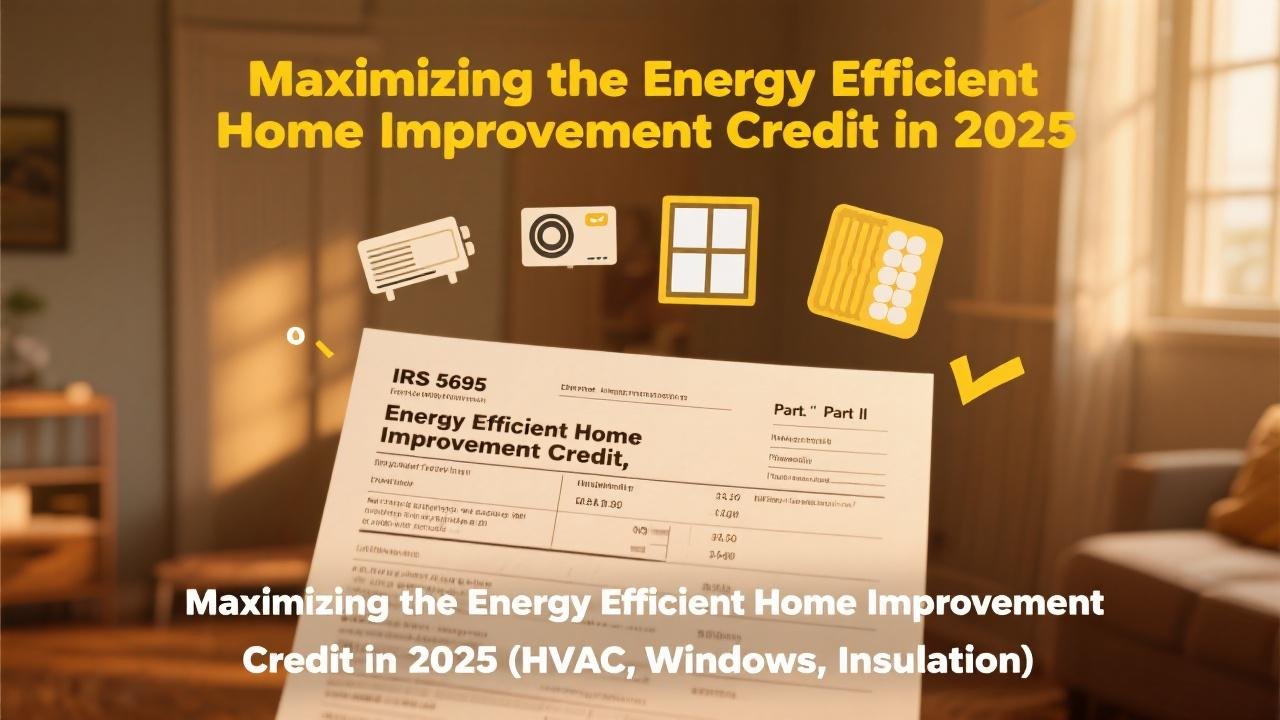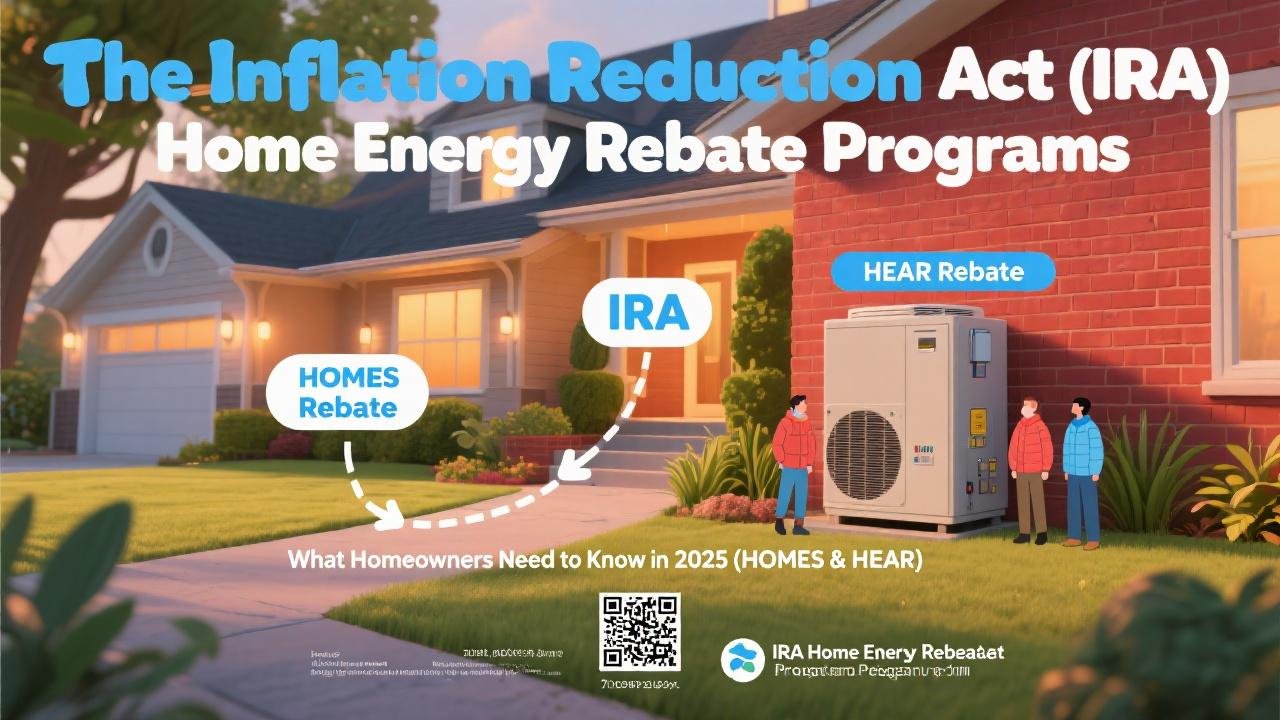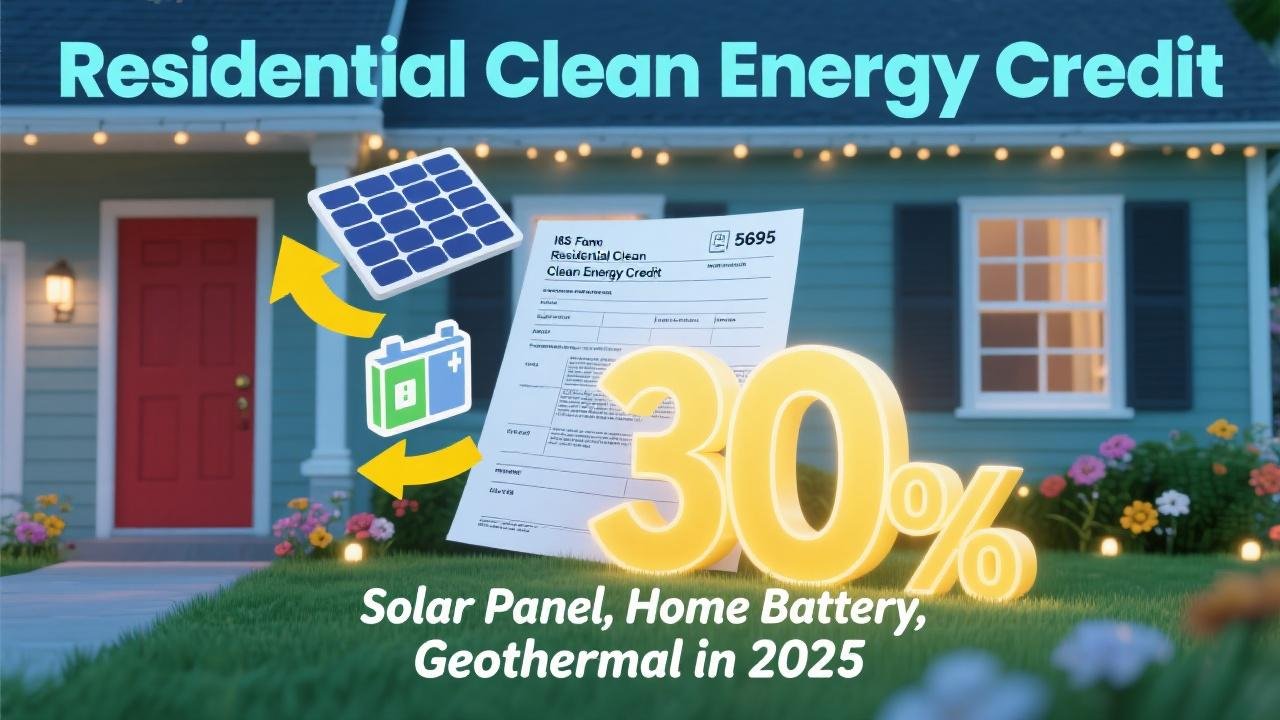Upgrading Your Home’s Efficiency with Federal Tax Relief
Making your home more energy-efficient is a smart move that can lead to lower utility bills, increased comfort, and a reduced environmental impact. In 2025, the U.S. Federal Government provides a valuable incentive to help homeowners undertake these upgrades: the Energy Efficient Home Improvement Credit. This tax credit, significantly enhanced by the Inflation Reduction Act, can help offset the cost of qualifying improvements like high-efficiency heating and cooling systems, new windows and doors, insulation, air sealing, and even home energy audits. This guide will detail what this credit covers for 2025, the specific limits, and how you can claim it.
What is the Energy Efficient Home Improvement Credit?
This federal tax credit allows homeowners to claim a percentage of the cost of eligible energy-efficient improvements made to their existing primary residence in the United States.
- Credit Amount: For improvements placed in service between January 1, 2023, and December 31, 2032, the credit is generally 30% of the qualified expenditures.
- Annual Limits: Unlike the Residential Clean Energy Credit, this credit has annual limits for different types of improvements and an overall annual cap.
- Overall Annual Limit: There’s a total limit of $3,200 per taxpayer per year for all qualifying improvements combined.
- This means you can potentially claim this credit year after year if you make eligible improvements in different tax years. There is no lifetime limit.
Eligible Improvements and Specific Annual Limits for 2025:
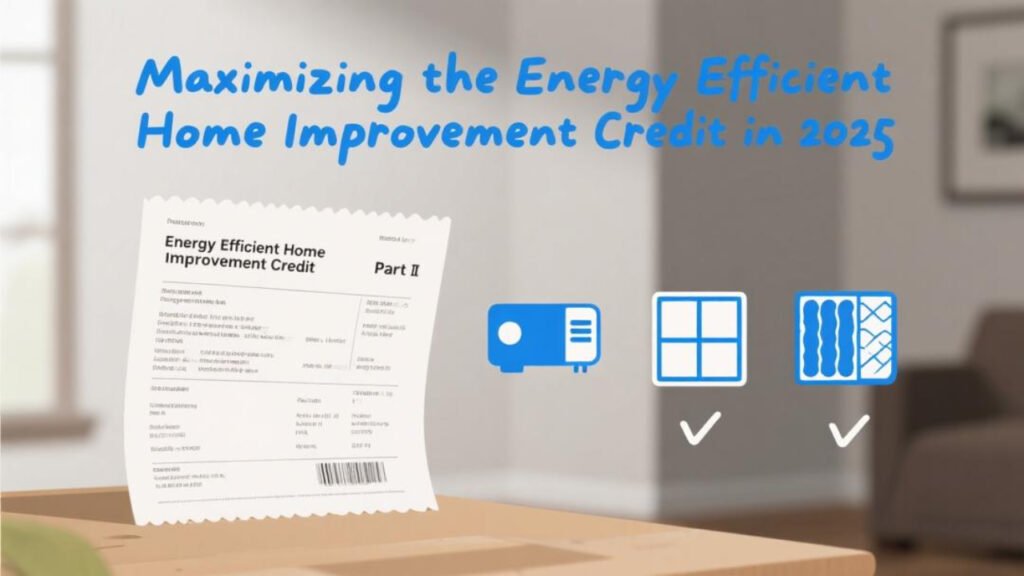
The 30% credit is subject to specific dollar limits for certain categories of improvements. It’s important to note these individual caps, as they all fall under the $3,200 total annual limit.
Building Envelope Components (General Annual Limit of $1,200 for these items combined, unless a specific item limit is lower):
- Exterior Doors: 30% of cost, up to $250 per door, with a $500 total annual limit for all exterior doors. Must meet applicable ENERGY STAR requirements.
- Exterior Windows and Skylights: 30% of cost, up to $600 total annual limit. Must meet ENERGY STAR Most Efficient certification requirements.
- Insulation and Air Sealing Materials or Systems: 30% of cost. These items do not have a specific individual dollar cap beyond falling under the $1,200 annual limit for building envelope components. Must meet relevant International Energy Conservation Code (IECC) standards in effect two years prior to installation (e.g., for 2025 installation, meet IECC standards from Jan 1, 2023).
Home Energy Audits:
- Credit: 30% of cost, up to $150 total annual limit.
- Requirements: Must include a written report and inspection identifying significant and cost-effective energy efficiency improvements. Must be conducted by a qualified home energy auditor certified by a program listed on the Department of Energy’s website.
Residential Energy Property (Heating, Cooling, Water Heating):
- Air Source Heat Pumps & Heat Pump Water Heaters (Electric or Natural Gas): 30% of cost, up to $2,000 total annual limit. This $2,000 limit is a combined cap for these items plus biomass stoves/boilers.
- Requirement for Air Source Heat Pumps (2025): Must be ENERGY STAR Most Efficient certified.
- Requirement for Heat Pump Water Heaters: Must meet ENERGY STAR requirements.
- Central Air Conditioners: 30% of cost, up to $600 total annual limit. Must meet specific ENERGY STAR efficiency tiers (e.g., SEER2 ≥ 16 for split systems in most regions).
- Natural Gas, Propane, or Oil Furnaces and Hot Water Boilers: 30% of cost, up to $600 total annual limit. Must meet specific efficiency ratings (e.g., AFUE ≥ 97% for gas furnaces).
- Natural Gas, Propane, or Oil Water Heaters (Storage or Tankless): 30% of cost, up to $600 total annual limit. Must meet specific ENERGY STAR efficiency ratings (e.g., UEF ≥ 0.81 for gas storage, UEF ≥ 0.95 for tankless).
- Biomass Stoves and Boilers: 30% of cost, up to $2,000 total annual limit (combined with heat pumps/HPWHs). Must meet specific thermal efficiency ratings.
- Air Source Heat Pumps & Heat Pump Water Heaters (Electric or Natural Gas): 30% of cost, up to $2,000 total annual limit. This $2,000 limit is a combined cap for these items plus biomass stoves/boilers.
Electrical Panel Upgrades (to support new electric equipment):
- Credit: 30% of cost, up to $600 total annual limit.
- Requirements: Panelboards, sub-panelboards, branch circuits, or feeders installed along with qualifying building envelope components or energy property. Must meet National Electric Code and have a capacity of 200 amps or more.
Who Qualifies for the Energy Efficient Home Improvement Credit?
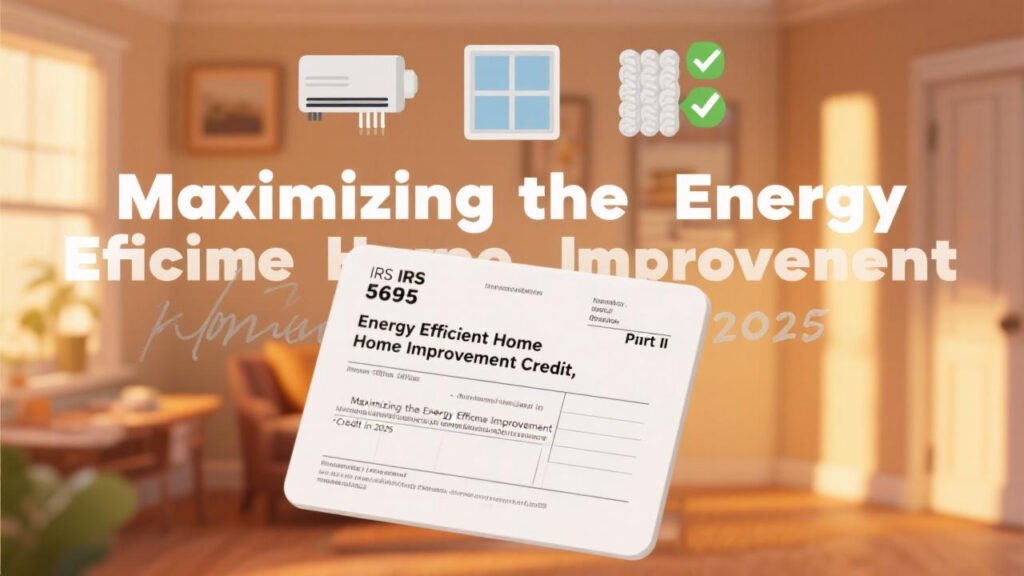
- Primary Residence: The improvements must be made to your existing primary residence in the United States (the home where you live most of the time). This credit generally does not apply to new construction or rental properties if you are the landlord.
- New Equipment: All qualifying property must be new, not used.
- Placed in Service: The credit is claimed for the tax year when the property is installed and ready for use.
How to Claim the Energy Efficient Home Improvement Credit in 2025:
- Verify Eligibility: Ensure the specific products you purchase and install meet the required ENERGY STAR or other efficiency standards for the tax year of installation. Check the ENERGY STAR website and manufacturer certifications.
- Keep Detailed Records: Maintain all receipts, invoices, manufacturer’s certification statements (attesting that the product qualifies for the credit), and any home energy audit reports. You may need the manufacturer’s Product Identification Number (PIN) for some equipment.
- File IRS Form 5695: Complete Part II of IRS Form 5695, “Residential Energy Credits,” and attach it to your annual federal income tax return (Form 1040 or 1040-SR).
Strategic Planning for Maximum Benefit:
Since the credit has annual limits, but no lifetime limit, you can strategically plan your upgrades over several years to maximize the total credit received. For example:
* Year 1: Install a qualifying heat pump (up to $2,000 credit) and get a home energy audit (up to $150 credit).
* Year 2: Replace windows (up to $600 credit) and add insulation (up to the remaining portion of the $1,200 building envelope component limit).
* Year 3: Upgrade your electrical panel (up to $600 credit) when installing a new electric appliance.
Consulting with an HVAC professional or energy auditor can help you prioritize improvements for both energy savings and tax credit optimization.
Making Efficiency Upgrades More Affordable
The Energy Efficient Home Improvement Credit provides a valuable opportunity for homeowners in 2025 to reduce the cost of making their homes more comfortable, less expensive to operate, and better for the environment. By understanding the eligible upgrades, specific annual limits, and documentation requirements, you can effectively leverage this federal incentive. Always refer to the latest IRS guidance and ENERGY STAR criteria, and consider consulting a tax professional to ensure you maximize your eligible credits.

